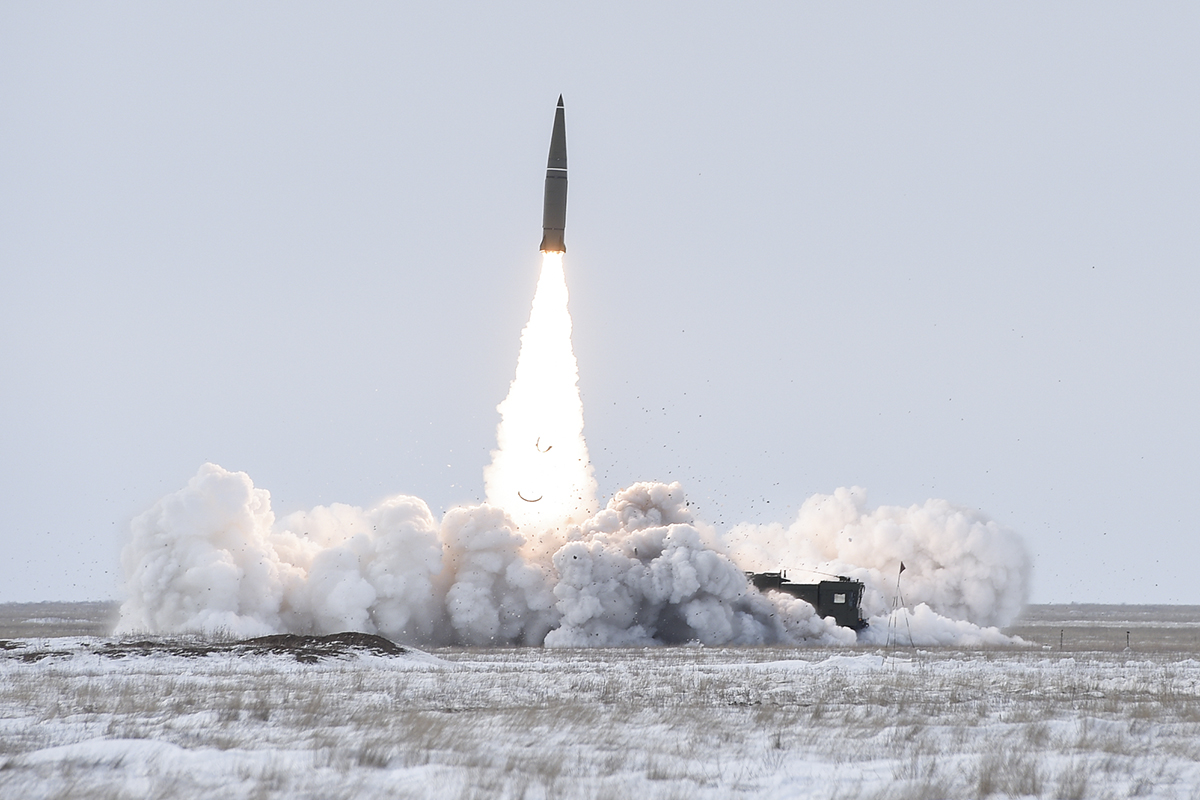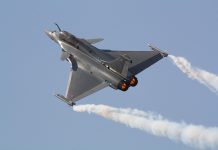
The above image is used for representative purposes only.
Russian President Vladimir Putin has presented a new technological challenge to Western nations, openly questioning the effectiveness of the advanced air defense systems provided by the U.S. and NATO. In a recent statement, Putin linked the future of the conflict in Ukraine to the possible deployment of systems like THAAD, suggesting that Russia intends to use new missile technology to showcase its military strength.
Putin remarked, “I don’t know if these air defense systems are already in Ukraine, but if the Americans choose to send them, let them.” He further implied that such a move would allow Russia to observe how these systems perform against the new Russian missile, “Oreshnik,” hinting at a significant gap between Western technology and Russia’s latest advancements.
According to the Kremlin, missiles like the “Oreshnik” are designed to surpass current Western defense systems, asserting Russia’s technological superiority and potentially altering the course of the war. Putin also stressed the importance of observing any “technical solutions” arising from NATO’s actions, which could provide valuable insights for enhancing Russian military strategies.
“Our forces are trained to deal with new technologies. The chance to test and learn new approaches that will benefit us in the future is invaluable,” Putin emphasized, highlighting the importance of adapting Russian forces to the latest Western weaponry.
In addition, Putin once again referred to the Ukrainian government as a “neo-Nazi regime,” a term often used in Russian rhetoric to justify military aggression and rally domestic support. The Kremlin continues to amplify this narrative, blending it with strategic military statements that convey confidence in Russia’s ability to confront external threats.
The West’s response to this challenge could be pivotal in shaping the military situation in Ukraine and influencing global efforts to manage tensions between East and West. As NATO member states increasingly provide advanced weaponry, Russia is likely to continue testing these systems, aiming to strengthen its military capabilities and geopolitical position.
Ukrainian President Volodymyr Zelensky swiftly responded to Putin’s comments, rejecting the idea of a “technological duel” between Russia’s “Oreshnik” missile and Western air defense systems. In a press conference in Brussels, Zelensky criticized Putin’s remarks as irresponsible and lacking rationality, questioning the leadership behind such statements.
“Today, a representative from the Kremlin said that Russia is offering a ‘technological duel’… Putin claims that Russia will strike Kyiv with an ‘Oreshnik’ missile, and our Western partners should provide air defense to see what happens. Is this the approach of a responsible leader? Do you think this is a reasonable person? He’s simply despicable,” Zelensky stated.
The “Oreshnik” missile is part of Russia’s new generation of weapons, which the Kremlin plans to use in its broader struggle for influence. While Putin remains confident in the missile’s capabilities, its effectiveness against advanced systems like THAAD or Patriot remains uncertain.
This raises important questions about the future of these technological clashes, which could reshape global security dynamics and prompt new strategic considerations for all involved.
Zelensky emphasized that Ukraine would not only fight Russia but also rely on NATO’s strategic support to strengthen its air defense. Western allies providing advanced air defense systems play a critical role in defending Ukrainian cities, including Kyiv, against Russian attacks, while sending a clear message that Russia’s aggression will not be tolerated.
“Our Western partners have already provided Ukraine with advanced air defense systems, and we are prepared to use every opportunity to protect our skies and our future. Russia cannot dictate the terms of this technological duel because this is not a war of technologies, but a war for survival,” Zelensky added.
The global arms race has increasingly focused on technological superiority, particularly in missile defense. As Russia introduces advanced weapons like the Oreshnik missile, a key question arises: Could this new weapon overcome the U.S. Terminal High Altitude Area Defense (THAAD) system? To answer this, we must analyze the core capabilities of both systems and how they might interact in a real-world scenario.
The Oreshnik missile stands out for its enhanced maneuverability, setting it apart from traditional ballistic missiles. Unlike standard ballistic missiles, which follow a relatively predictable trajectory, the Oreshnik can alter its course mid-flight, making it harder for interception systems to track and predict its path.
This maneuverability, along with potential low-altitude flight, could challenge missile defense systems designed to intercept more straightforward threats. THAAD is primarily intended to intercept ballistic missiles during their terminal phase — as they descend toward their target — using advanced radar and sensors to track missile trajectories and launch interceptors at high speeds.
However, Oreshnik’s non-ballistic, unpredictable flight path could complicate THAAD’s targeting protocols, which assume that missiles follow a predictable trajectory. Additionally, the Oreshnik’s potential to use jamming or radar signature manipulation could hinder THAAD’s radar detection, making it more difficult to track and engage the missile.
Furthermore, the Oreshnik’s ability to fly at lower altitudes, staying beneath radar coverage, could reduce the effectiveness of THAAD’s sensors, preventing it from detecting the missile in time. The missile’s ability to avoid the line of sight of ground-based radar systems could also impede THAAD’s engagement capabilities.
While THAAD is designed to intercept ballistic missiles traveling at extremely high speeds, the Oreshnik, operating at lower speeds, presents unique challenges due to its unpredictability and flight maneuvers. The reduced time and space for interception could make it harder for THAAD to intercept the missile, especially if its path changes rapidly.
In a broader strategic context, Russia’s development of the Oreshnik missile likely aims to counter Western air defense systems, including THAAD. Its advanced maneuverability and potential stealth capabilities suggest a new direction in missile technology that challenges established defense protocols.
If the Oreshnik proves capable of bypassing systems like THAAD, it could signal a shift in the balance of power, especially in regions where air defense systems are crucial for protecting key infrastructure.
For the U.S. and its allies, the rise of such missiles presents a growing challenge. As Oreshnik and similar systems evolve, NATO will need to adapt and enhance its missile defense technologies to stay ahead of these emerging threats.
This technological arms race may drive the development of even more advanced interceptors, potentially incorporating AI-powered targeting, faster intercept speeds, and enhanced countermeasures to counteract new missile technologies.
Ultimately, whether the Oreshnik missile can overcome THAAD will depend on several factors, including its ability to avoid detection, its speed and flight profile, and how THAAD responds to these new challenges. While Oreshnik’s capabilities pose a real threat, THAAD is designed to evolve and counter emerging threats, ensuring that this technological arms race will continue to intensify in the years ahead.





